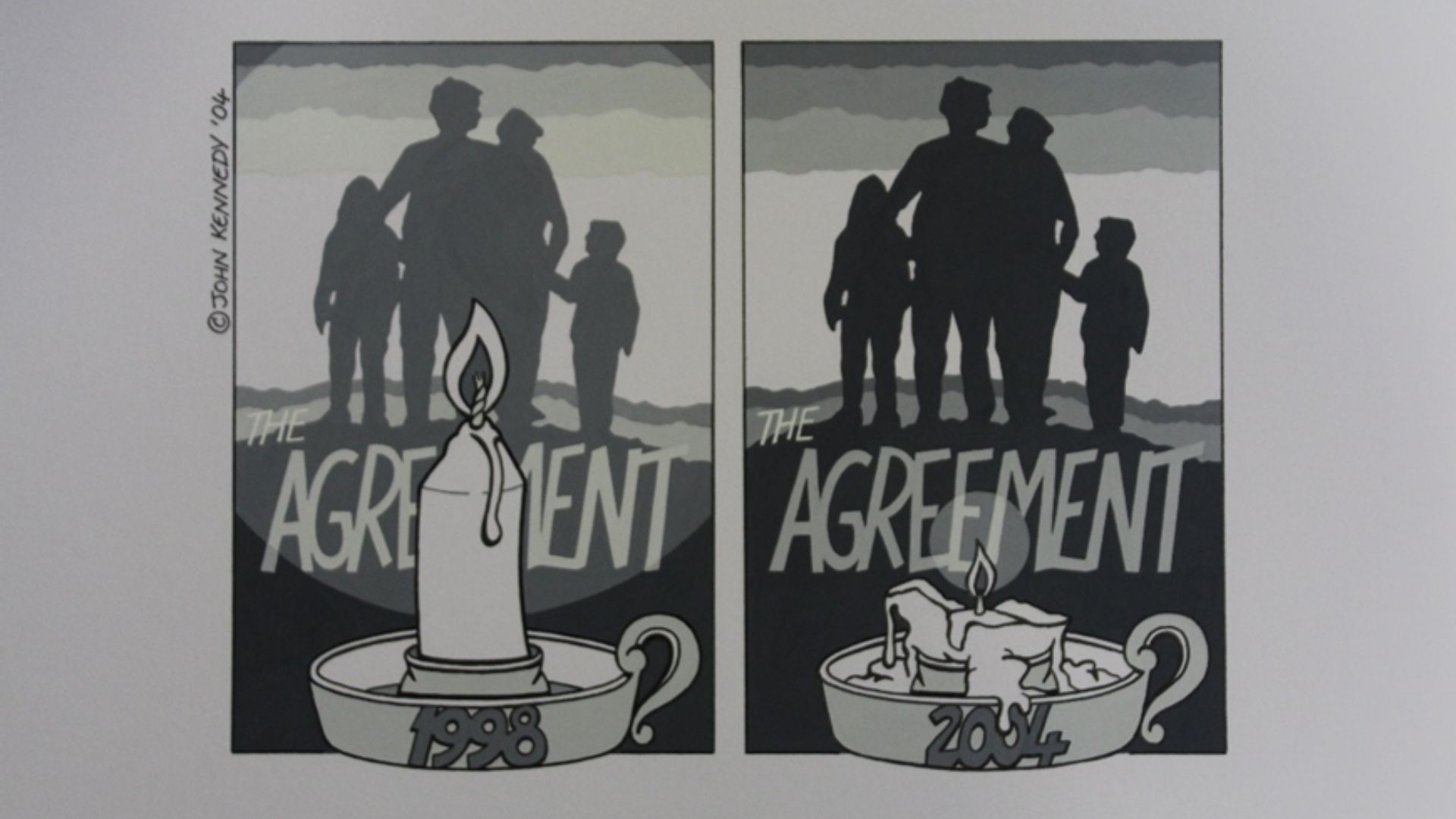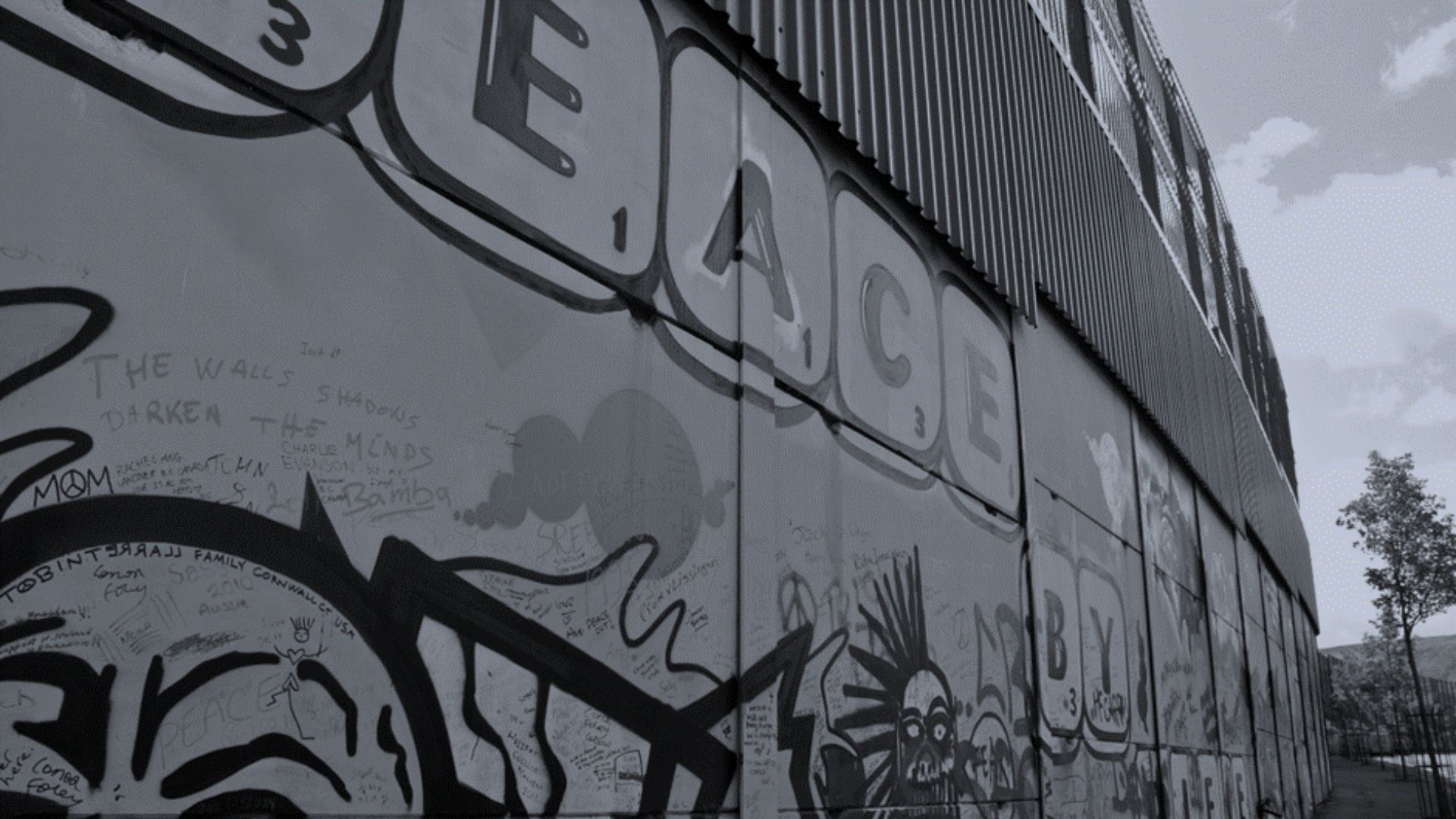Legacies of the Agreement
Politics, Policing, Prisoners, and Decommissioning
By the end of May 1998, the Belfast/Good Friday Agreement was signed and endorsed. The challenge was then to implement its terms, beginning with elections to the first Northern Ireland Assembly.
Post-Agreement Politics
Elections to the new Northern Ireland Assembly were held on 25 June 1998, but issues including decommissioning delayed the full devolution of powers to the Assembly until December 1999. The way the Northern Ireland Assembly was designed to ensure cross-community power sharing means that when all the major parties cannot agree, the Assembly can be collapsed. Due to a range of disagreements, of the 25 years the Northern Ireland Assembly has been in existence, it has been suspended intermittently for approximately 9 of those years. At the time of writing, there is no sitting Assembly at Stormont.
Prisoners and Decommissioning
The release of political prisoners and decommissioning was due to take place within 2 years of the Agreement. Prisoners with sentences connected to paramilitary groups who had declared a ceasefire were eligible for early release, and by 28 July 2000, a total of 428 prisoners were released. Decommissioning proved to be a more difficult process, and most paramilitary groups only began disarming from 2001.
Policing
Reforms to policing were introduced following recommendations from a report by the Independent Commission on Policing for Northern Ireland. The Patten Report, named after the Commission’s Chair Chris Patten, made a range of suggestions including changing the name of the police from the Royal Ulster Constabulary (RUC) to the Police Service of Northern Ireland (PSNI) and creating a Police Ombudsman. The RUC reformed into the PSNI in 2001.

Peace?
25 years on from the Belfast/Good Friday Agreement, Northern Ireland is a more peaceful place than before 1998, but some divisions have endured, and terrorist violence has occurred at various times.
Omagh
Only 4 months after the Agreement was signed, the Real IRA (a breakaway faction of the IRA, which rejected the 1997 ceasefire) exploded a car bomb in Omagh on 15 August 1998, killing 29 people, including a woman pregnant with twins, and injuring hundreds more. The Omagh bomb was the most fatal single incident in the entirety of the ‘troubles.’
Farewell to Arms?
Political support for the Agreement persisted. In 2005, the IRA announced it was ending its armed campaign, pledging support to the “full implementation of the Good Friday Agreement.” In response, the British Government reduced the British Army presence in Northern Ireland, ending Operation Banner (the deployment of British troops since 1969) in 2007.
‘Peace’ Walls
Security checkpoints around urban centres had begun to be dismantled since the mid-1990s and by the early 2000s were removed completely. Yet, peace walls across Northern Ireland remain, and some have even been reinforced since 1998.




The Legacies of the Belfast/Good Friday Agreement
The Belfast/Good Friday Agreement means and has meant different things to different people over the past 25 years. The process to get to the Agreement was complex, and so too have been its legacies. There is no singular legacy of the Agreement, and as such, we asked the public to tell us their thoughts on the Belfast/Good Friday Agreement, and its legacy. This is some of what they said:











Oral Histories
During 2023, as part of the Origins and Legacies: The Belfast/Good Friday Agreement project, oral history interviews were undertaken at The Linen Hall which documented people’s experiences of and attitudes towards the Agreement in 1998, and 25 years on. We are grateful to everyone who shared their insights, and a selection of the oral histories are available to listen to via each section of this digital exhibition.
Artefacts
THE PROJECT
To mark the 25th anniversary of the Belfast/Good Friday Agreement, The Linen Hall launched a project to explore its origins and legacies. Through an exhibition, a series of events, and an oral history project, we reflected on the processes that led to the accord, the competing sides of the referendum campaign and its impact.
ORIGINS
The Belfast/Good Friday Agreement was the culmination of years of talks and negotiations between individuals and groups locally, nationally, and internationally which aimed to stop the violence which had been ongoing since the late 1960s and create a consensus for the future political framework of Northern Ireland.
AGREEMENT
After negotiations, walk-outs, and suspensions, an agreement was reached in Belfast on 10 April 1998, which was Good Friday. Before the Agreement could be ratified, the electorate in Northern Ireland had to accept its terms, while voters in the Republic of Ireland had to approve proposed amendments to the Irish Constitution.






